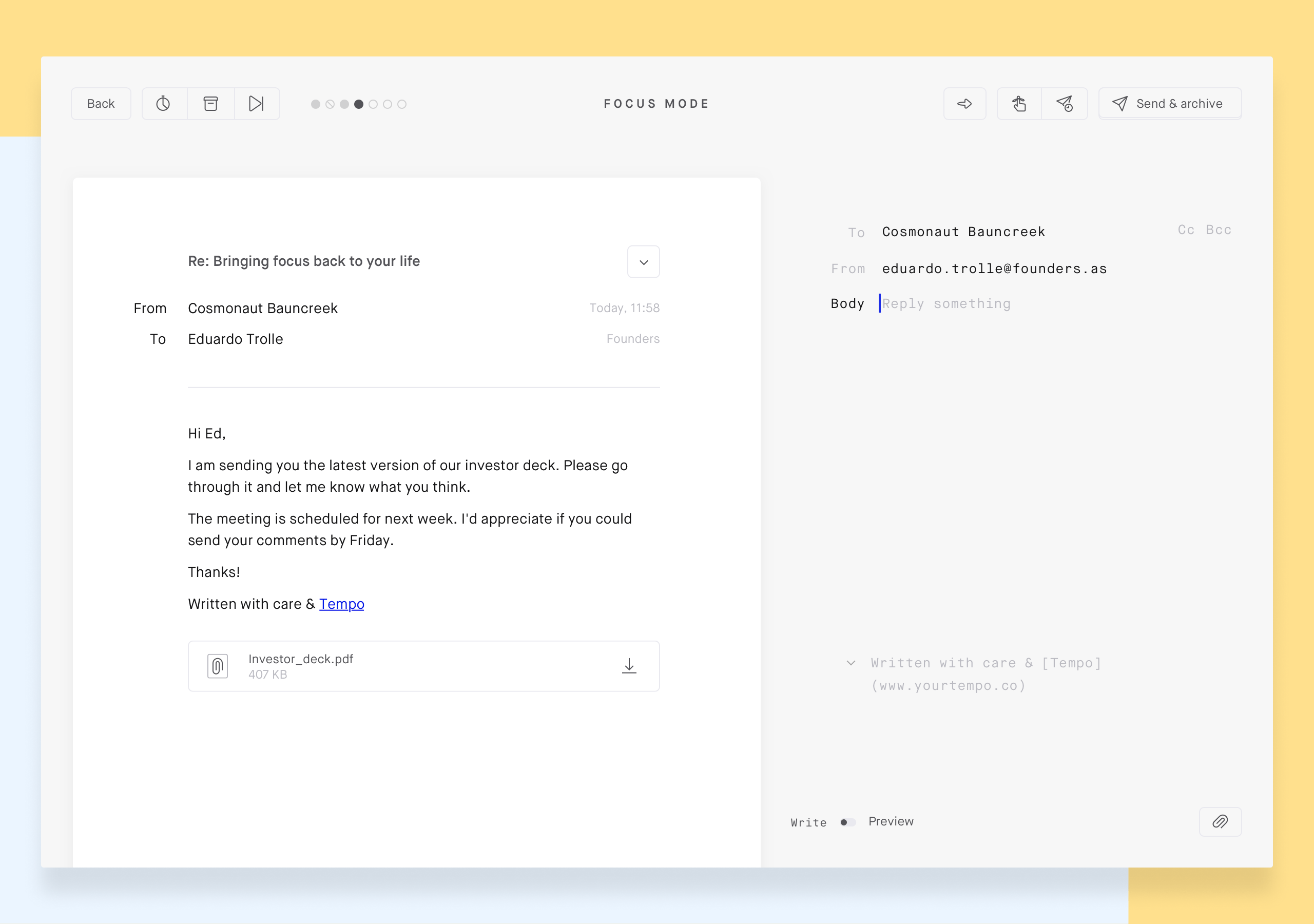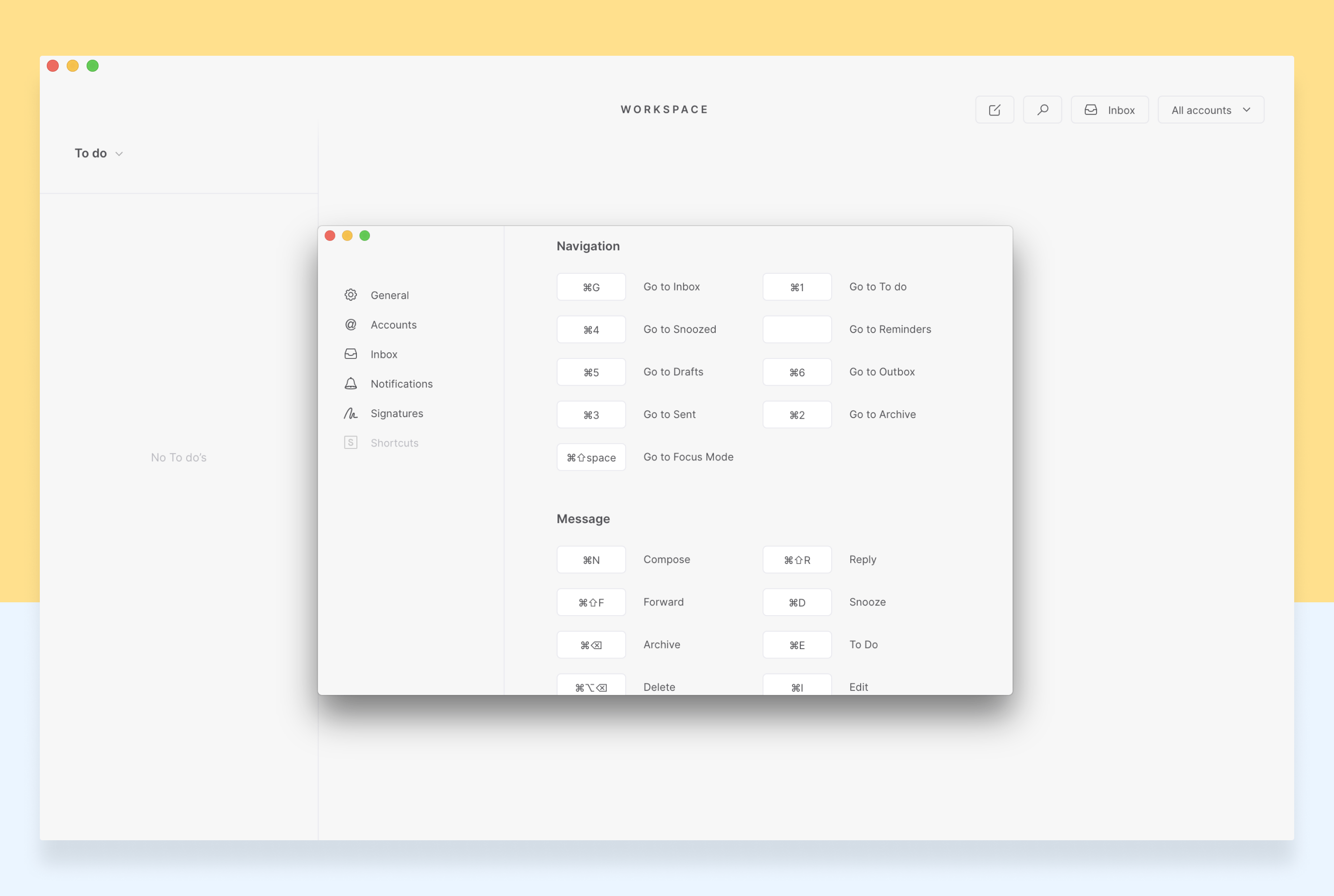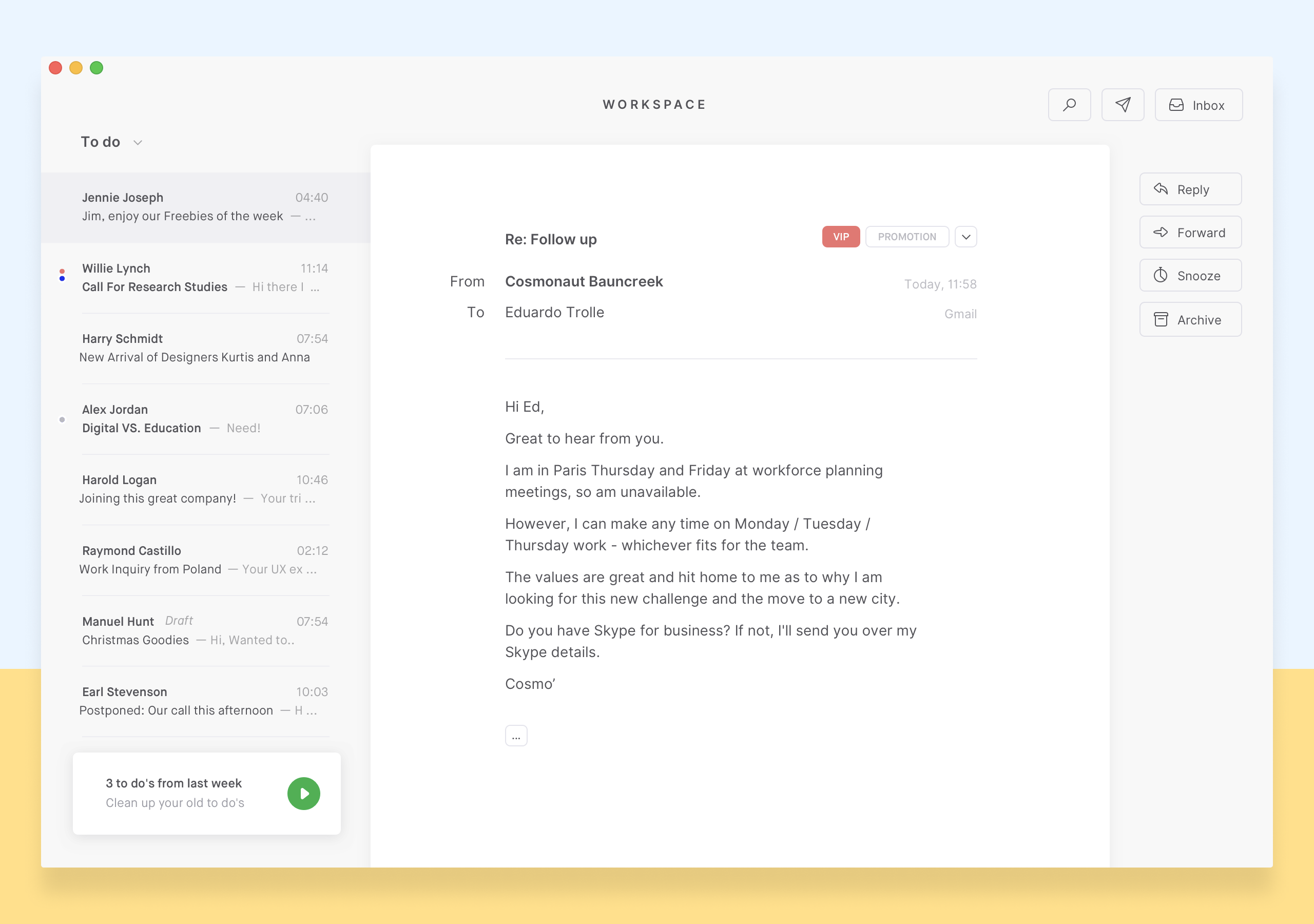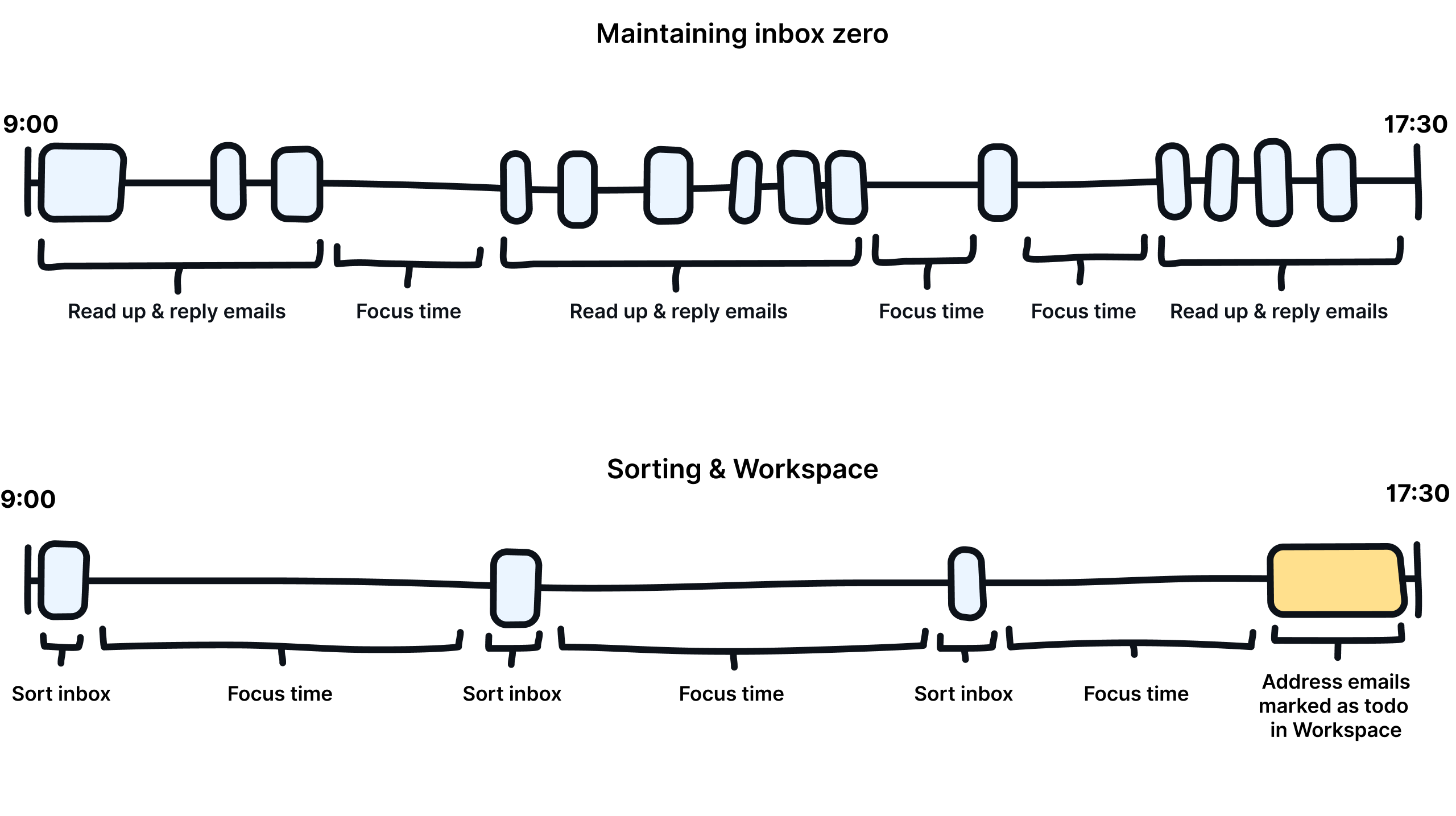Meet Tempo
Mindful email done right

For years, big-tech celebrated a culture of engagement by creating habit-inducing frameworks and shamelessly piggybacking of social proof to reel users back to their products. Tech addiction is a health problem on a global scale; the average American adult spends over 11 hours per day listening to, watching, reading or generally interacting with digital media. This all leads up to increased symptoms of depression, loneliness and anxiety.
Luckily, 2018 marked the first signs of a shift when Apple and Google introduced their efforts to reduce screen time on their platforms. While most social media platforms are hesitant or outright ignore the screen-time problem (your attention is their currency after all), I love the idea of software being self-conscious and confident enough to prioritise the digital wellbeing of their users over their engagement.
After some time looking for a new mail client to replace Inbox (thanks for that, Google) I stumbled upon Tempo. While it offered some of the core features—archiving & snoozing—I was missing in Gmail, Tempo’s simplicity stood out. No bells and whistles, no obscure email tracking, no deep integrations with Slack—just good old focused email. The limited feature-set and design both serve a clear purpose: instead of promising to just get more work done in less time, Tempo wants to get you out of your inbox.
Even though some aspects of email have been replaced with real-time communication tools like Slack, email is still a massive contributor to the stream of interruptions we expose ourselves to throughout the workday, and—just like Slack and social media—email can be an addictive little slot-machine to check into when you’re unoccupied or bored. Seeing an email client center its entire value proposition around using less email feels like a positive, refreshing continuation of the screen-time efforts from 2018.
So what’s Tempo like? What does it offer? After using it for the last 6 months, my favourite thing is probably sending a reply to someone. On the left, you see the email you’re replying to; on the right, you’re writing your response. The layout is so effective and straight-forward, why did it take us so long for us to figure this one out?

The writing experience took some notes from iA writer: most of the UI disappears when you start typing a reply and you don’t have to worry about styling because Markdown is supported.

The seemingly simple interface is deceptively customisable as well. It offers all the features one would expect from a modern email client, like adding multiple accounts and signatures. But Tempo also goes the extra mile with fully remappable hotkeys, two inbox interfaces to choose from and batched notifications that can be sent out at set intervals.

If you still want immediate notifications for certain threads, you can mark them as VIP and you’ll get notified right away. The fact that this option is opt-in instead of opt-out speaks volumes about Tempo’s commitment to keep you in your flow. Even when you’re trying to change this default, Tempo has one surprising trick up its sleeve.

The Workspace
Yet perhaps the biggest feature to keep your flow is a feature dubbed ‘the Workspace’. The main idea here is that the Workspace is a separate space living next to your inbox. When you receive mail, you first go through your inbox and either decide to archive, postpone or mark the email as to-do. The ones marked as to-do will end up in the Workspace—away from the chaos of your inbox—to follow up on whenever you like.

Now, this might sound a bit unnatural, why add that extra layer between you and your inbox? Not gonna lie, it certainly took me some time to wrap my head around this too—than what you might be used to in Gmail. After I became used to it however, Workspace helped me structure my approach to email and—consequentially—spend less time on it.
As with most bad habits, your environment plays a key role in determining your behaviour. Keeping lots of snacks around the house will cue you to start snacking, yet by keeping them out of sight you suddenly need to make a conscious decision to grab one. Having the rest of your incoming mail out of view while you’re reading up in the Workspace is a clever psychological trick to keep you focused on the ones that matter.
As for my personal setup, I get batched notifications every 3 hours throughout the workday, at which I try to sort all new email right away. To keep the sorting as light as possible, I try to glance over an email without actually reading it, then mark it as a to-do for later if I need to read it fully or reply to it. After repeating this a couple of times, I address the emails marked as to-do in my Workspace before I leave the office. By blocking a chunk of time at the end of the day to go through all emails you’re much more productive than when you’d address them ad-hoc. Working down the Workspace at the end of the day gives closure too, which helped me feel more at ease even if my inboxes kept piling up after work.

To close off, I’m pretty excited about this product and I hope it will find success. Tempo is currently still in closed beta, yet plans to roll out with a monthly subscription soon. To match the expectations, the team is currently working towards iOS and Android apps to accompany the desktop version before launch; show them some love on Product Hunt if you're interested. I sincerely hope they'll thrive, our most important work happens outside of our email clients after all.